Press Conference of "Clinical Guidelines for Prevention and Treatment of Type 2 Diabetes in the Elderly in China (2022 Edition)" Held in Beijing
On January 16, 2022, the "China Elderly Type 2 Diabetes Prevention and Treatment Clinical Guidelines (2022 version)" (hereinafter referred to as the "New Guidelines") conference co-sponsored by the Endocrinology and Metabolism Branch of the Chinese Geriatric Society, the Endocrinology and Metabolism Branch of the Chinese Geriatric Health Care Medical Research Society, and the Geriatric Medicine Professional Committee of the Beijing Medical Award Foundation was successfully held in Beijing. The meeting will be conducted online and offline.
▼ Opening Speech
 Professor Fan Li, president of the Chinese Geriatric Society, attended the meeting online and delivered a speech. She said that the new guidelines bring together the wisdom of experts from multiple disciplines such as endocrinology and metabolism, cardiovascular disease, kidney disease, neurology, nutrition and geriatric medicine, which is very authoritative and practical. The participation of multidisciplinary experts reflects the characteristics of geriatric medicine and the sense of The Times, which is also the first guide in the field of geriatric medicine and endocrine metabolism since the beginning of 2022, and is the best gift for the New Year of 2022, which is a great boon for both doctors engaged in geriatric medicine and endocrine metabolism professionals and elderly T2DM patients.
Professor Fan Li, president of the Chinese Geriatric Society, attended the meeting online and delivered a speech. She said that the new guidelines bring together the wisdom of experts from multiple disciplines such as endocrinology and metabolism, cardiovascular disease, kidney disease, neurology, nutrition and geriatric medicine, which is very authoritative and practical. The participation of multidisciplinary experts reflects the characteristics of geriatric medicine and the sense of The Times, which is also the first guide in the field of geriatric medicine and endocrine metabolism since the beginning of 2022, and is the best gift for the New Year of 2022, which is a great boon for both doctors engaged in geriatric medicine and endocrine metabolism professionals and elderly T2DM patients.
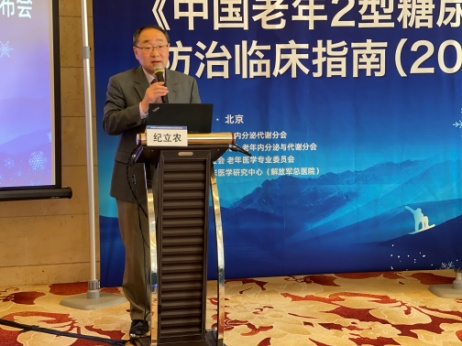
Professor Ji Linong from Peking University People's Hospital attended the meeting and delivered a speech. Professor Ji said that China's aging problem is increasingly serious, the elderly population diabetes prevalence is high and the control rate is low, the prevention and treatment is facing a serious situation, the release of the new guidelines will play an important guiding role in the standardized prevention and treatment of clinical elderly type 2 diabetes (T2DM).
The conference was co-chaired by Professor Wang Yao of the geriatric Endocrinology Department of Beijing Hospital and Professor Li Chunlin of the Endocrinology Department of the Second Medical Center of the PLA General Hospital, and invited many well-known experts in the field of endocrinology and metabolism to attend and give wonderful keynote speeches on the management of elderly diabetes and the interpretation of the new guidelines. In a solemn and warm atmosphere, the experts jointly witnessed the smooth progress of the launch ceremony of the new guide.
▼ A glimpse of the host's style
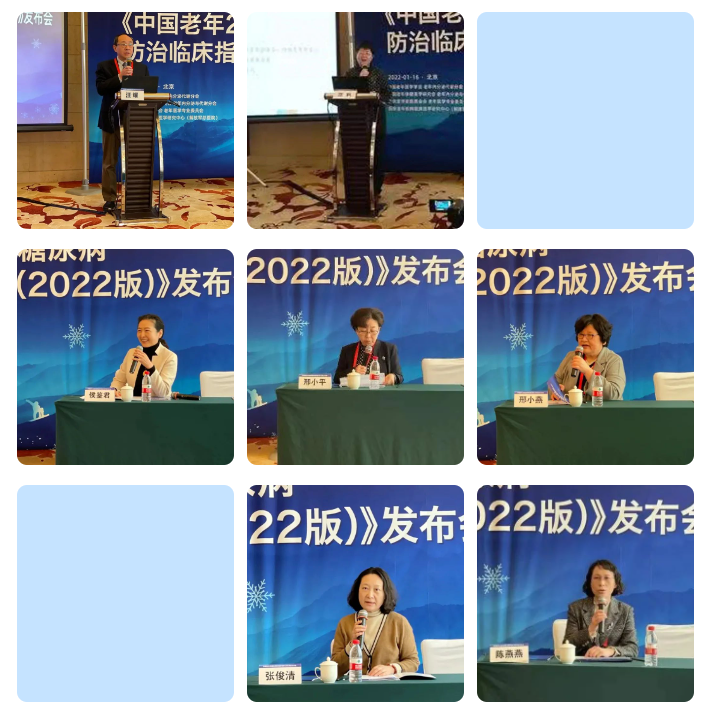 ▼ New guidelines launch ceremony
▼ New guidelines launch ceremony

Discussion on the idea and approach of senile diabetes management
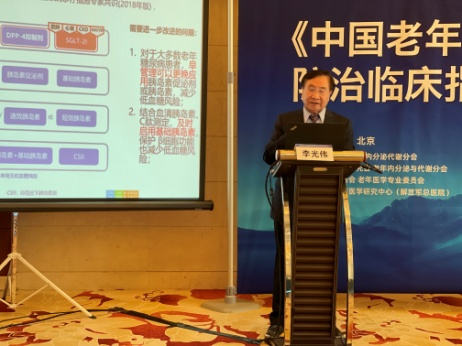
Professor Li Guangwei of the China-Japan Friendship Hospital of the Ministry of Health pointed out that, together with diabetes and pre-diabetes, abnormal glucose metabolism affects about 3/4 of the elderly in China, but the awareness rate, treatment rate and standard attainment rate are low, and the control status quo needs to be improved. Elderly patients with diabetes are in different stages of diabetes development, and the degree of damage to islet function varies greatly, so it is necessary to pay attention to the evaluation of islet function when making management plan for patients. According to the different survival conditions of elderly patients, appropriate management goals and treatment modes with strong compliance should be selected, and the efficacy of hypoglycemic drugs should be timely and reasonably used to continuously improve medication strategies, reduce the "three rates" and strive for the best outcome is the treatment goal of diabetes.
In particular, he stressed that China's current diabetes treatment is still in the "redemption" mode of focusing on diabetes patients, and moving the threshold of diabetes treatment should be an important direction of diabetes management in the future. As Richard M. Bergenstal, former president of the American Diabetes Association (ADA), has said, T2DM is completely preventable with aggressive intervention in the pre-diabetes stage, and the real way forward for diabetes in older adults is to prevent it early at a young age!
Current situation and improvement measures of elderly diabetes management in China
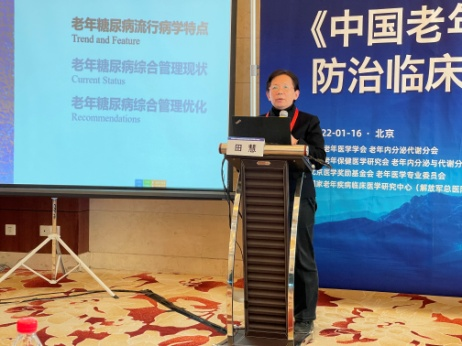
Professor Tian Hui, honorary president of Endocrinology and Metabolism Branch of Chinese Geriatric Society and Second Medical Center of PLA General Hospital, said that in the past 10 years, the prevalence rate of elderly diabetes in China has been increasing, about 30% of elderly people are diabetic patients (more than 95% of them are T2DM), but hyperglycemia and other related risk factors have not been effectively controlled. Complications and comorbidities lead to a high rate of death and disability. Cardiovascular and cerebrovascular disease is the main threat of death in the elderly, and poor diabetes management is one of the important influencing factors.
Because of the physiological changes and individual differences in old age, the management of elderly diabetes should be people-oriented rather than age-based. The new guidelines suggest that elderly T2DM patients should first conduct comprehensive evaluation of blood glucose and islet function level, complications and comorbidities, organ function and personal life ability. Personalized treatment should clarify patient positioning, treatment focus and management goals. The whole-process management of diabetes includes three levels: islet function protection, blood sugar control and complication prevention. The ";four early" principle (early prevention, early diagnosis, early treatment and early standard) should be advocated, and attention should be paid to the publicity of healthy lifestyle and the improvement of patients' self-management ability.
Necessity and feasibility of self-management of elderly diabetes mellitus
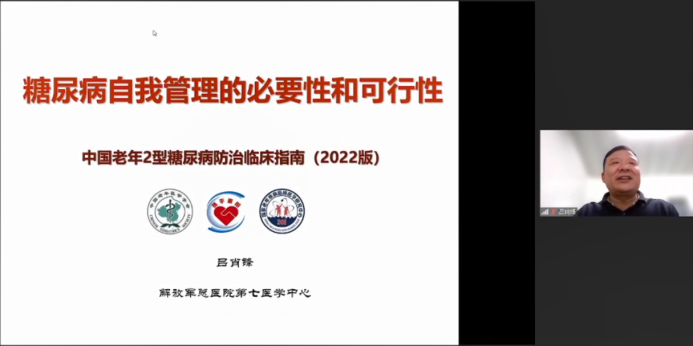 Professor Lv Xiaofeng, president of the Endocrinology and Metabolism Branch of the Chinese Geriatric Society and the Seventh Medical Center of the PLA General Hospital, stressed that elderly diabetes has clinical characteristics such as large heterogeneity, large blood sugar fluctuation, increased risk of hypoglycemia, and high risk of cardiovascular disease. Coupled with the inconvenience caused by the new coronavirus epidemic, it is particularly important for elderly people to have good self-management ability of diabetes. In fact, studies have shown that under the same treatment, blood sugar in elderly patients is more easily controlled at ideal levels, and self-management is not only necessary but also feasible. Elderly diabetes self-management should pay attention to basic treatment, namely diabetes education, patient self-management and blood glucose monitoring, diet treatment and exercise treatment, on this basis, the use of hypoglycemic drugs to support treatment can play a better effect. Self-management mainly involves self-learning of diabetes knowledge, participating in the formulation and implementation of diet and exercise plans, learning to analyze the factors affecting the change of blood sugar, learning the efficacy and side effects of drugs, and other aspects. It is very important to construct a hospital - community - family (individual) integrated self-management system.
Professor Lv Xiaofeng, president of the Endocrinology and Metabolism Branch of the Chinese Geriatric Society and the Seventh Medical Center of the PLA General Hospital, stressed that elderly diabetes has clinical characteristics such as large heterogeneity, large blood sugar fluctuation, increased risk of hypoglycemia, and high risk of cardiovascular disease. Coupled with the inconvenience caused by the new coronavirus epidemic, it is particularly important for elderly people to have good self-management ability of diabetes. In fact, studies have shown that under the same treatment, blood sugar in elderly patients is more easily controlled at ideal levels, and self-management is not only necessary but also feasible. Elderly diabetes self-management should pay attention to basic treatment, namely diabetes education, patient self-management and blood glucose monitoring, diet treatment and exercise treatment, on this basis, the use of hypoglycemic drugs to support treatment can play a better effect. Self-management mainly involves self-learning of diabetes knowledge, participating in the formulation and implementation of diet and exercise plans, learning to analyze the factors affecting the change of blood sugar, learning the efficacy and side effects of drugs, and other aspects. It is very important to construct a hospital - community - family (individual) integrated self-management system.
Diet management of elderly diabetes mellitus
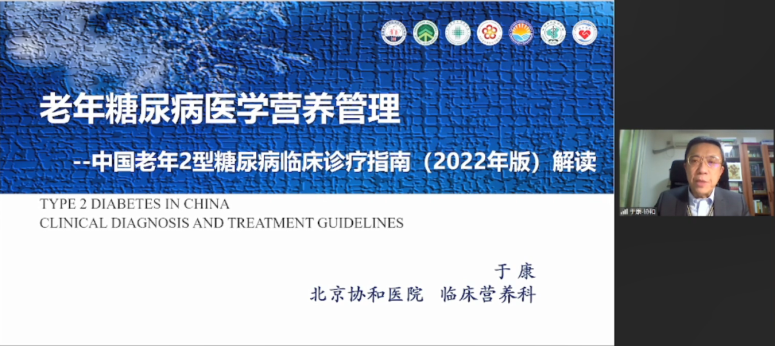 Professor Yu Kang from the Department of Nutrition of Peking Union Medical College Hospital explained the importance of diabetes medical nutrition management. Diabetic diet plays an important role in blood sugar control. Entering the ";well-off"; society, people need to change and adapt to the diet concept and way of modern life. The principle of diet treatment is to measure out for in, measure body and choose food. The total energy should be determined according to the body, weight, age, gender and daily amount of exercise. According to the glucose, lipid, purine metabolism and blood glucose level of the patient, the distribution ratio of main food types should be selected to maintain normal weight and reasonable body composition. Pay attention to the balance between food intake, exercise and hypoglycemic drugs to avoid hypoglycemia. For example, the energy supply ratio of carbohydrates is 50% to 55%, the protein is 20% to 25% (1.2 to 1.5g/kg), and the high-quality protein is more than 50%.
Professor Yu Kang from the Department of Nutrition of Peking Union Medical College Hospital explained the importance of diabetes medical nutrition management. Diabetic diet plays an important role in blood sugar control. Entering the ";well-off"; society, people need to change and adapt to the diet concept and way of modern life. The principle of diet treatment is to measure out for in, measure body and choose food. The total energy should be determined according to the body, weight, age, gender and daily amount of exercise. According to the glucose, lipid, purine metabolism and blood glucose level of the patient, the distribution ratio of main food types should be selected to maintain normal weight and reasonable body composition. Pay attention to the balance between food intake, exercise and hypoglycemic drugs to avoid hypoglycemia. For example, the energy supply ratio of carbohydrates is 50% to 55%, the protein is 20% to 25% (1.2 to 1.5g/kg), and the high-quality protein is more than 50%.
Interpretation of new guidelines
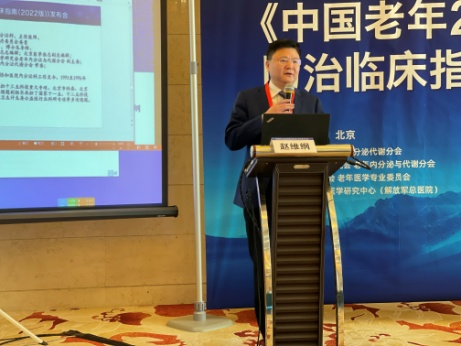
Professor Zhao Weigang from Peking Union Medical College Hospital gave a detailed explanation of the new guidelines. He introduced that on the basis of the Expert Consensus on T2DM Diagnosis and treatment Measures for Elderly people in China (2018 edition), the new guidelines summarize new information about diabetes related guidelines and research in recent years, add systematic management rules, and improve the treatment level of elderly diabetes, change the management concept, give personalized treatment recommendations and operational specific measures, and optimize the treatment outcome.
Regarding the prevention and treatment strategy of elderly diabetes, the new guidelines emphasize comprehensive assessment, the principle of ";four early", basic treatment, rational application of hypoglycemic drugs, and simplify the path of hypoglycemic drugs, and select and prioritize commonly used drugs. In terms of the diagnosis and treatment of complications, the new guidelines point out that long-term poor blood sugar control is the direct cause of diabetes complications, elderly patients with diabetes should control blood sugar as much as possible within the acceptable range, and diabetic complications should be discovered and treated in time in clinical practice to protect organ functions. At the same time, the new guidelines also recommend comprehensive management of atherosclerotic cardiovascular disease (ASCVD) risk factors, should grasp the "early start early benefit"; principle of timely detection, and on the basis of lifestyle management to enable drug treatment, in order to reduce the rate of death and disability. In addition, senile diabetes also needs to pay attention to osteoporosis, senile syndrome, muscular attenuation, neurocognitive dysfunction and other special problems.
 peroration
peroration
With the successful launch of the Clinical Guidelines for the Prevention and Treatment of Type 2 Diabetes in Elderly China (2022 edition), the management of elderly diabetes in China will also usher in a new chapter. Let us pay attention to the complexity of elderly T2DM and associated diseases, adopt scientific, effective, appropriate and sustainable management strategies and methods, and make joint efforts to improve the treatment outcome and quality of life of elderly diabetes patients.

